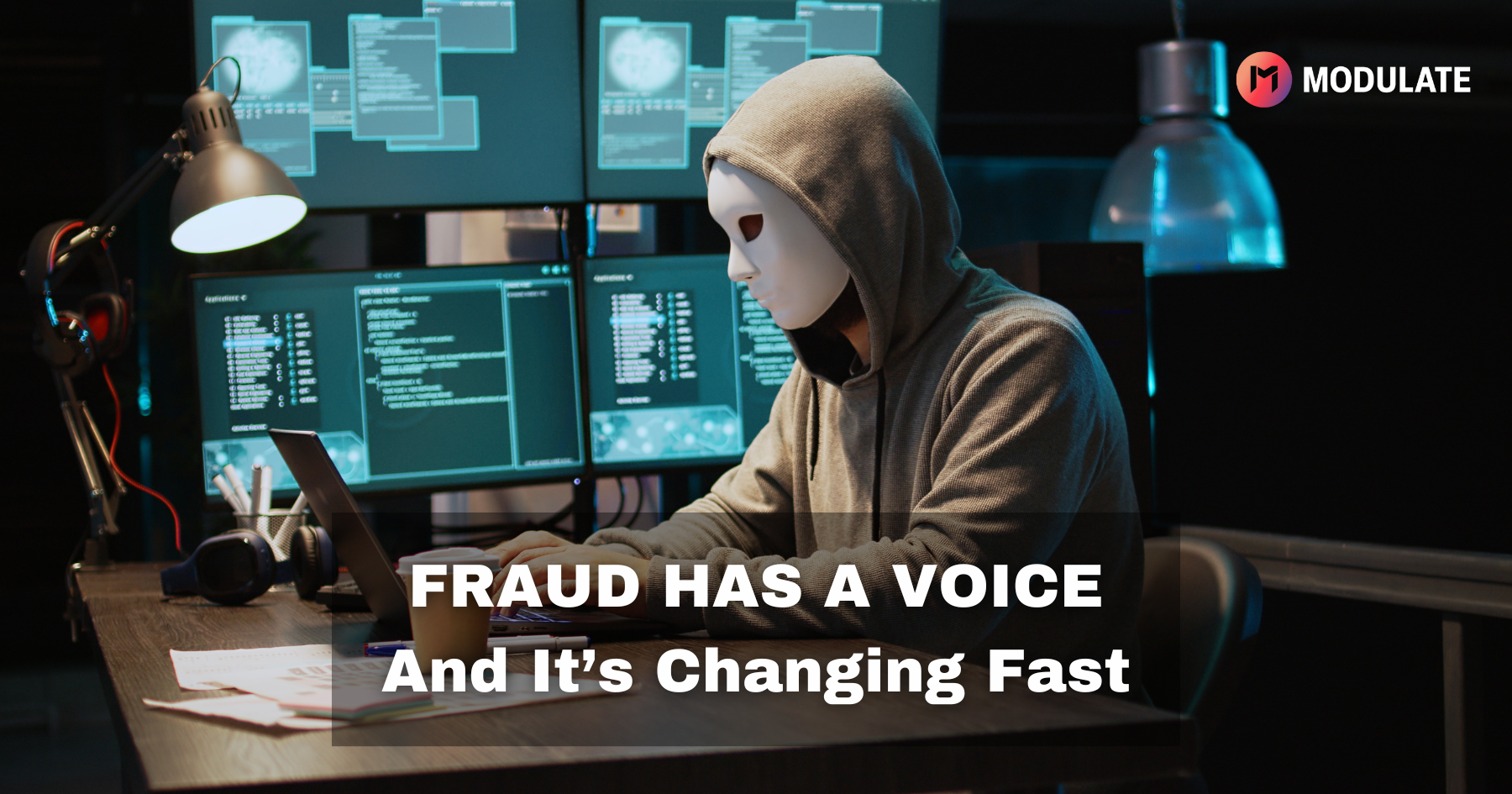The Silent Threat: Why Insurance Fraud Is Moving to the Phone Line

If you’re relying on traditional methods to protect your customers and infrastructure from fraud, you may be missing one of the fastest growing threats: voice fraud.
While most insurance providers have built robust systems to detect digital and document-based fraud, voice channels remain dangerously underprotected. That gap is being exploited — fast.
Estimates suggest 10–20% of insurance claims are fraudulent, and 78% of consumers are concerned about becoming victims. Meanwhile, 21% of insurers plan to invest in AI in the next 12–24 months, but few are applying that investment to voice security — despite the growing threat.
In this post, we’ll explore:
- Why voice-based insurance fraud is surging
- How traditional protections are failing
- And how VoiceVault offers the first real-time solution to catch voice fraud at scale
Why Fraudsters Target Insurance
Insurance fraud occurs when a person or company deliberately misrepresents information — either when submitting a claim or applying for insurance — to make a profit or reduce their cost.
Common targets of insurance fraud:
- Life insurance
- Health insurance
- Property and casualty
- Workers’ comp
Fraudsters target the insurance sector because of the high-value payouts, predictable call scripts, and weak verification. AI has only made their job easier, enabling the creation of convincing deepfake voices that can impersonate anyone — a policyholder, a colleague, even a company executive.
As AI becomes more sophisticated, so do attackers. While 21% of insurers plan to invest in AI in the next year, most insurers have not taken action to secure the voice channel — leaving a dangerous blind spot in their fraud prevention strategies.
Why Voice Fraud is Increasing
Fraudsters are increasingly using voice channels — especially phone calls — because they offer a powerful mix of vulnerability and emotional leverage.
What Are Voice Channels?
Voice channels used for fraud can include:
- Live phone calls
- Robocalls
- Caller ID spoofing
- Callbacks triggered by phishing emails or texts
Fraud via phone, known as vishing (voice phishing), aims to extract sensitive information or manipulate individuals into taking action — such as authorizing a claim, releasing personal data, or changing account details.
Why Voice Fraud is So Effective
- Emotion and urgency: Human voices trigger trust in ways text-based interactions don’t.
- AI accessibility: Anyone with a computer can now use voice cloning tools.
- Bypassing security: Sophisticated deepfakes can defeat knowledge-based authentication and even some biometric voice systems.
- Targeting the unprotected: Many insurers have secured email and web portals, but not voice channels.
The numbers don’t lie: A Pindrip report found a 475% increase in synthetic voice fraud attacks against insurance companies alone.
Example: Deepfake Voice Fraud in Action
Consider this real-world scenario: A finance employee at a multinational firm in China received what appeared to be a legitimate video call from senior company executives. The request? Transfer funds to a new partner.
The catch? The call — and the voices — were completely fake.
Using deepfake voice and video technology, scammers impersonated leadership so convincingly that the employee complied. The result? A $26 million loss.
The implications are clear: Voice fraud is no longer theoretical. It’s happening — and it’s working — even against experienced employees.
Insurers are especially vulnerable:
- Policyholder impersonation: Fraudsters use voice clones to file false claims or change account info.
- Internal fraud: Agents and employees can be duped into authorizing actions based on a fake voice.
- Old-school verification: Static methods like PINs or security questions are easily bypassed.
Why Traditional Fraud Defenses Fall Short
Most current fraud detection systems were built for digital interactions — not phone calls. And that’s exactly where they break down.
Here’s why:
- Outdated verification: PINs, passwords, and KBA are outdated and easily bypassed via social engineering or leaked data.
- Voice biometrics alone aren’t enough: Deepfake voices can mimic tone, pitch, and cadence with eerie precision.
- Context is missing: Traditional systems don’t understand the conversation — just the credentials.
- No real-time support: Fraud is only detected after the damage is done.
In a world where attackers are using AI to exploit emotion and trust, insurers need a more advanced — and responsive — solution.
The True Cost of Voice-Based Insurance Fraud
Voice-based insurance fraud is rapidly taking over the threat landscape, and the numbers are staggering:
- 19% increase in voice-based insurance fraud in 2024 alone
- 162% projected growth in deepfake fraud attacks against insurers
- 475% increase in synthetic voice fraud attacks, specifically targeting insurance companies
While voice fraud can be costly to insurance providers, the impact extends far beyond financials. These attacks lead to:
- Fraudulent payouts totaling millions
- Resource-draining investigations
- Loss of customer trust
- Heightened regulatory risk
And yet — few insurers are prepared.
Introducing VoiceVault: Real-Time Protection from Voice Fraud
VoiceVault is the first solution built to detect voice fraud in real time. Insurance companies can use VoiceVault to:
- Catch inconsistent or manipulative claims during live calls
- Detect impersonation of policyholders or internal staff
- Train and support agents with smart prompts and alerts
- Reduce false positives and investigation overhead
How It Works
VoiceVault securely listens to live phone conversations — not just metadata — and uses conversational intelligence to detect suspicious behavior, inconsistencies, and deceptive intent. It then provides real-time support and alerts to help agents respond immediately — putting insights into action.
What Sets VoiceVault Apart
- Powered by Modulate’s Voice Intelligence Platform — built to scale without sacrificing speed or accuracy
- Goes beyond keywords and voiceprints to detect context, tone, and behavior
- Detects fraud as it happens — stopping attacks in their tracks
VoiceVault is a new — and necessary — layer of protection for your most vulnerable channel for fraud: voice.
Why VoiceVault is the Insurance Industry’s Missing Link
Voice fraud isn’t coming — it’s already here. Traditional tools simply weren’t built for the speed, sophistication, and emotional manipulation of today’s attacks.
VoiceVault is the only tool that:
- Listens in real time
- Understands the full conversation
- Responds intelligently in the moment
It’s AI-powered, future-ready, and designed specifically for high-stakes industries like insurance. If you're investing in fraud prevention — but ignoring voice — you're leaving the door wide open.
See VoiceVault in Action
Don’t wait until your next fraudulent payout to take voice fraud seriously. Schedule a demo to see how VoiceVault can protect your business — and your customers — today.







.png)
